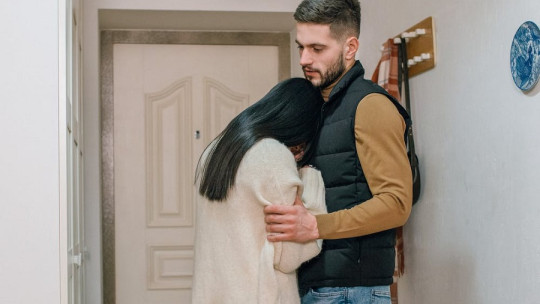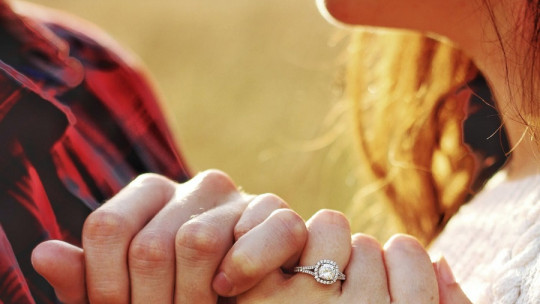
According to attachment theory, we all develop an attachment style toward other people, based on the caregiving experiences we had with our parents (or other primary caregivers) in childhood.
Attachment refers to our willingness to seek contact and closeness a human need that is considered even more vital than food.
The qualities of attachment
Attachment involves:
Human beings have an innate need for attachment and protection because we do not survive alone, much less as children. When a child feels that he is not safe in a place, he seeks to understand the context in his own way and apply protective strategies, which are behaviors that allow him to reduce his fear by giving him a feeling of control over the situation.
Attachment in adults
In adult life these strategies are not lost, we continue using the same patterns of behavior in situations that are familiar to us from childhood. For example, as an adult it is no longer my mother who ignores me when I call her, but I feel ignored when my partner does not answer the phone and I have the same reactions as a child with my mother: desperation, a feeling of abandonment, which is why I complain I insist, I cry, although the situation may not be that bad.
To understand our type of attachment, it helps us to record how much our protection and foster needs were met in childhood and what we lacked as children Then we can more easily identify adaptive behaviors that helped us feel safe as children, but that often cause problems in adult life.
Types of attachment
From Bowlby’s attachment theory, 4 types of attachment are classified.
1. Anxious or anxious/ambivalent attachment
An anxious attachment develops in children who constantly fear being abandoned or being left alone, given that their main attachment figure is ambivalent or distant, so they cannot trust that they will always have the protection they need. Sometimes it is there and sometimes it isn’t, you never know. They feel helplessness and need to root themselves in someone who protects them.
These children are alert and guessing what the mother or father wants, so that they can receive affection. They feel that they must earn your love and attention, which sometimes you receive and sometimes you don’t. In this sense, their behavior can be insistent, they cry easily and become anxious thinking that they do not have the necessary protection or help.
In adult life, anxious attachment is characterized by overcompensating for the fear of abandonment, always thinking about what else can be done so that my partner or other people around me are happy and do not abandon me. When the couple is in a bad mood (not necessarily because of him or her) they get nervous, they insist, they want to know what is happening and it makes them very uncomfortable.
Protective strategies of adults with an anxious attachment
Anxiously attached adults tend to compensate for their rejection anxiety typically through perfectionism, vanity, and every effort to please… precisely to attract the other person and avoid rejection. Everything they do is with the intention of pleasing, because they learned that if they do not please they will be rejected.
They strive to avoid conflict and hate confrontation. They prefer not to say anything, nor express their own needs so as not to upset their counterpart. They idealize and paint conflictive situations beautifully and many times they feel that they cannot do it alone and thus they long for refuge in the partner from whom they hope to be protected. In extreme cases they cling, beg and become jealous.
2. Avoidant attachment
An avoidant attachment usually develops in children who From a very young age they felt that there are many expectations on them or those who feel that they must take charge of something important in the family and take on tasks that, from their childhood reality, really seem very overwhelming. For example: Taking care of younger siblings, taking care of mom after dad left her, doing things on their own, because they know that caregivers are very busy.
Those who are seen as the hope of the family, where they are not the ones protected, but rather the ones who must protect. It also develops in children who assume they are a burden or nuisance, who do not want to be a burden and finally develop autonomy and responsibility very prematurely.
A child who feels afraid of disappointing or annoying, cannot be himself, cannot make mistakes or disapprove of what others see in him/her, feels that he/she must constantly meet expectations and to do so wear masks that over time feel very tight. .
In adult life this continues, for example, by showing a lot of ambition at work, being the one who takes charge, not out of pleasure but out of feeling the obligation. At the same time, the weight of expectations means that the adult with avoidant attachment often withdraws when he anticipates that situations will arise that require his attention. As he learned that talking is useless and he does not want to disappoint, he does not say anything but falls into a passive aggressive behavior of “acting crazy” to distance himself from responsibility.
Protective strategies in adults with avoidant attachment
People with avoidant attachment they tend to fight for control, precisely so that their freedom, which was so violated, is not invaded. They fight to avoid losing in an argument, they seek to follow their own plans, they have difficulty making commitments and deciding on a relationship.
They are also demanding of themselves and seek to have their own time, diet, weight, etc. under control. Linked to the fear of falling into a situation of inferiority or of looking bad or stupid, they use rationalization, a way to block feelings of “weakness” and cover vulnerabilities to always remain on an objective and analytical level of the situation. But that in turn prevents you from establishing a real connection with your partner.
They become defensive, deny or put up a wall of access to protect their autonomy. In extreme cases they can defend their autonomy even using physical or verbal aggression, devaluing the other who is unconsciously seen as a threat to their freedom.
3. Secure attachment
A secure attachment develops in boys or girls whose needs for affection and protection were mostly satisfied, and it means no more than 30%. That is, if in your childhood you felt protected and loved by your primary caregivers, not all the time, but in the most necessary moments, it is likely that you have a secure attachment.
This basically means that social situations or emotional relationships as an adult do not generate greater anxiety in you, but rather you are able to separate your needs from those of your partner and thus naturally assume responsibility for what corresponds to you in your relationship. You also identify that certain behaviors of your partner have nothing to do with you. In this sense, you do not require specific protective mechanisms because, just as you felt safe as a child, you will feel safe as an adult in front of other adults.
Protective strategies for the securely attached adult
As I mentioned, the adult with a secure attachment does not present very striking defensive mechanisms, but in the end, no one has a 100% secure attachment. As social beings in need of recognition and acceptance, we all have certain insecurities, since no mother or father has been perfect. So attachment types can be used as poles of reference
Surely you felt identified with parts of one type and others of another type, since, between the two sides, there are many gray scales.
To understand how in your very personal situation you developed an attachment and what protective strategies you have applied as a result of it, it helps you work on this issue with a therapist.
4. Disorganized attachment and its protective strategies
A fourth type of attachment, disorganized attachment, represents a smaller part of the population, and develops in children whose primary caregivers turned out to be a threat to them, rather than figures of protection and stability. Mothers or fathers with extremely impulsive or aggressive behaviors, physically and emotionally, or who had an addiction and required care themselves, so they could not take care of their children.
When the attachment figure is scary, deep confusion occurs in children, who on the one hand demand affection and at the same time feel terror and threat. These children often fail to develop protective strategies, they lack a plan or internal model to accompany them in this situation and they present apparently incoherent behaviors, such as physical or mental blocks, catatonic or stereotyped movements.
In adult life, disorganized attachment is associated with mental disorders such as borderline personality disorder.
Attachment and the couple
We must keep in mind that we all have some type of attachment. Even if you are not 100% on one side or the other, you are most likely on a scale between anxious and avoidant, more on one side than the other.
What does that mean for your relationship?
Your partner cannot heal your attachment style can accompany you in your healing process, but since he/she has his/her own attachment style with which he/she must lead, the responsibility is on your side.
Your protective strategies are outdated, they served you well in your childhood, but when you grow up they cause more problems, because they literally lead you to act like a boy or girl in situations that do not justify it.
Example: When your boyfriend/girlfriend doesn’t answer the phone and you immediately think that he/she is cheating on you, you insist and keep calling again and again. Like as a boy/girl when mom didn’t come to your room because she was busy and crying helped you get her presence.
In every relationship we have the responsibility of taking charge of our childhood schemes. If you realize that you present one of the behaviors described in this article and you felt strongly identified with one of the types of attachment mentioned, It is likely that it also affects your relationship or the way you choose a partner
Opposites that attract
People with an anxious/ambivalent attachment often hook up with someone of an avoidant type and vice versa, because they represent this counterpart that they know from their childhood, is familiar to them and They repeat the same dynamics they know from their childhood
Individual and couples therapy can help identify your type of attachment and discover strategies to better accompany you in your particular situation.








